In 1933, Harry Gibson formed the Gibson Manufacturing Company in Seattle, Washington, to build large speeders capable of hauling large crews of loggers out into the woods. Previously he had worked as master mechanic for Weyerhaeuser Timber Company at their large logging operation at Vail, Washington, where he had seen the value of large fast crew speeders. He knew that he could build a better product than those currently being offered at the time, primarily the M.A.C. (Motor Appliance Corporation) and speeders built by Skagit Steel and Iron Works of Sedro-Wooley, Washington, starting in the 1920s. Even though it was in the midst of the Great Depresstion, he knew that logging companies at this time were looking at ways to cut costs. Previous to the design of his new machines, logging outfits had to haul men going out of camp to the logging sites in either coaches, a “mulligan” car, or even on flat cars pulled by a locomotive.
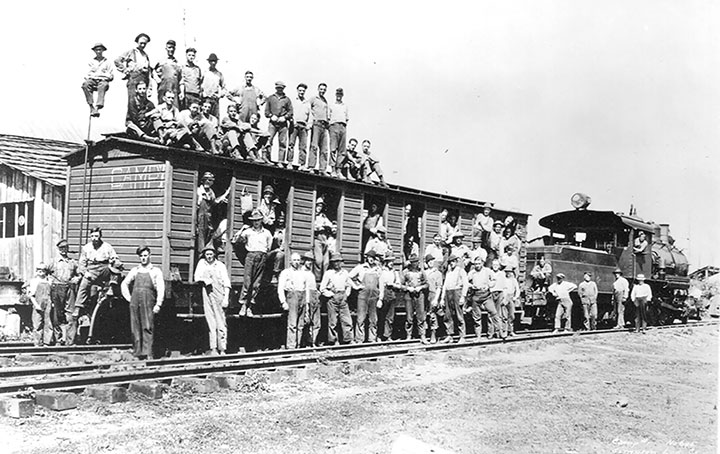
-Photo by Clark Kinsey.
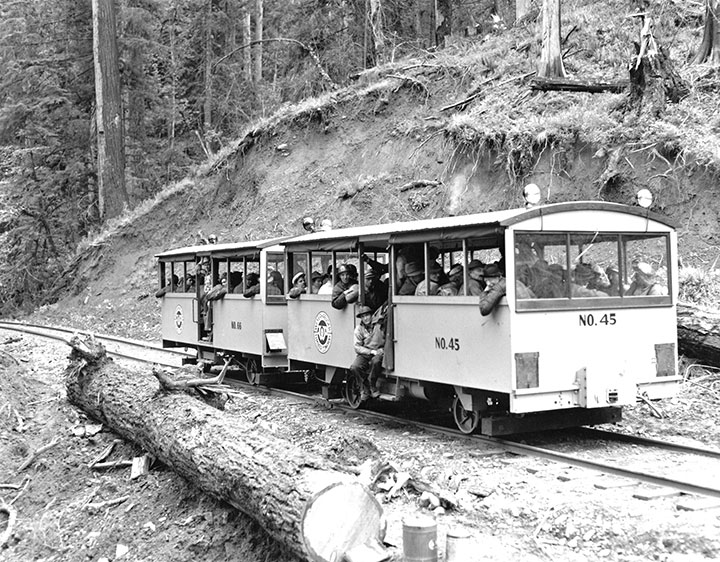
-Photo, Weyerhaeuser Archives.
Initially, Gibson offered a 12-foot long, 30 man, a 14-foot long, 40 man, and an 18-foot long, 55 man speeder. The 18 footer was also fitted with an arc welder and air, and marketed as a portable machine shop. The 12- and 14-foot models came equipped with a 55 horsepower Ford 4 cylinder engine, and the 18-foot model came with an 85 horsepower V-8.
To compliment the speeders, Gibson also produced trailers of identical construction to double the seating capacity. Some of the sales literature claims a sale of a 100 man speeder, while what was actually sold was a 50 man speeder and a matching trailer. The speeders and trailers both came equipped with air, as well as hand brakes.
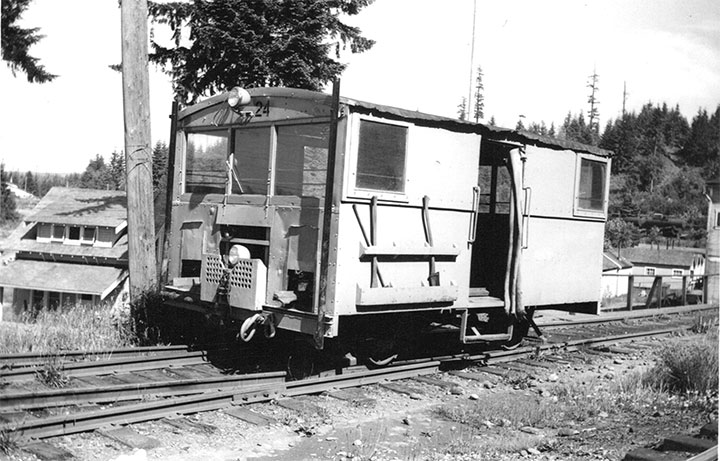
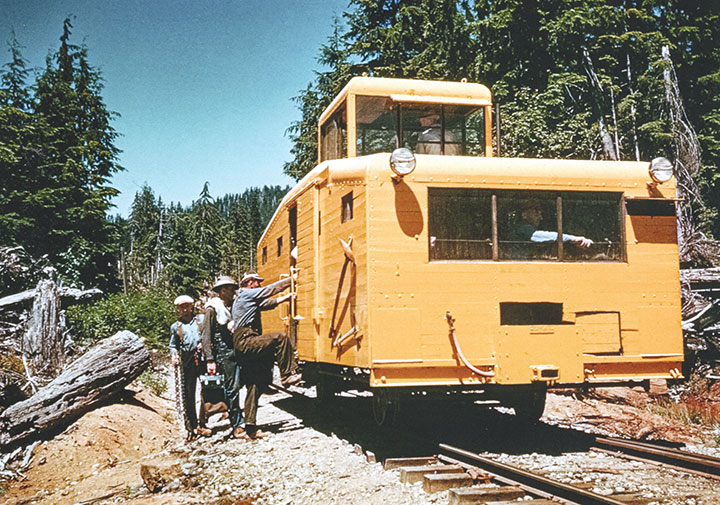
Most of these speeders were equipped with side doors, but a few had end doors instead. Most had the operator’s controls in the middle of the speeder, but a few were constructed with controls at each end.
By 1938, Gibson built an elongated version with eight wheels (two-trucks) and powered with a Diesel. It served Weyerhaeuser’s Longview, Washington, operation as a daily distributor of food supplies between Longview and all the logging camps.
In the early 1940s, Gibson built a cupola model that put the operator on top for better visibility. Users of this model were the Saint Paul and Tacoma Lumber Company, Simpson Logging, and the Weyerhaeuser Timber Company, all in Washington State.
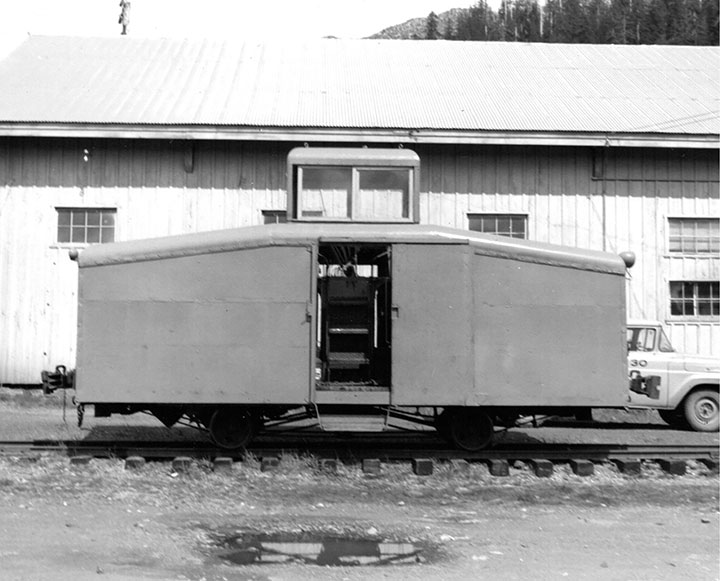
Gibson also developed an elongated model of the cupola design with two trucks. This was used on Vancouver Island in Canada by the Canadian Forest Products, Merrill Ring Wilson Ltd., and Salmon River Logging Company, Ltd. It wasn’t until 1946 that Gibson built the “Cadillac” of all logging speeders for Canadian Forest Products. Gibson built the frame and running gear, and Hayes Manufacturing Company of Vancouver, British Columbia, built the body. This beast was 40-feet long, seated 90 loggers, and could zip along at 40 MPH. It was powered by a Chrysler V-8 engine and survived into the 1970s before being scrapped.

-Photo, Simpson Archives.
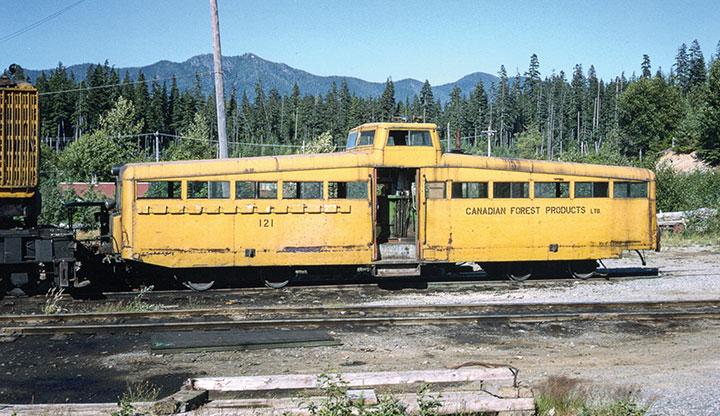
A few crew cars and or trailers still exist at the Roots of Motive Power at Willits, California, and the Oregon Coast Scenic Railroad near Tillamook, Oregon. None of the cupola designs exist, except the ex-Simpson one. It is operated occasionally by the Simpson Tourist Group near Shelton, Washington, but was rebuilt and totally reconfigured by the Simpson shops in 1986. You would hardly recognize it today.
My thanks to John Taubeneck for much of this information.

